It’s road safety, not rocket science — so why is the mayor’s office mocking transit users?
-
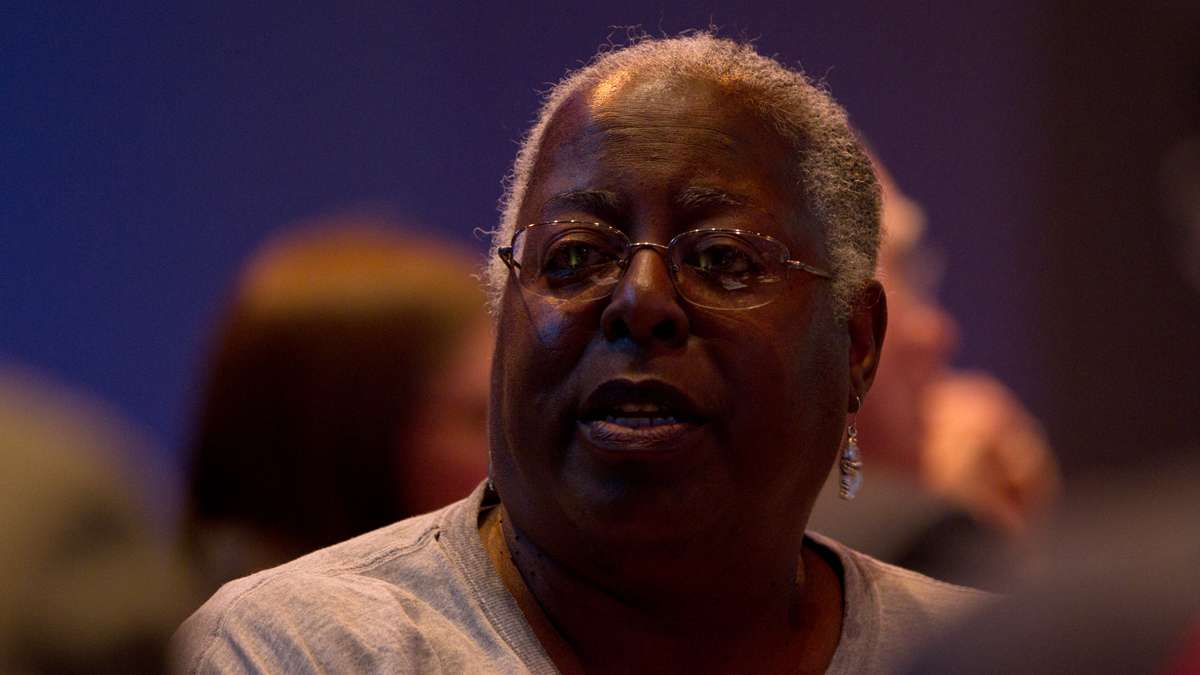
It was suggested that the idea of 'community' is different for younger residents and older residents. Young newcomers tend to care about the whole city, whereas, longer-term residents are more tuned into the activity on the block. (Ifanyi Bell/for NewsWorks)
-
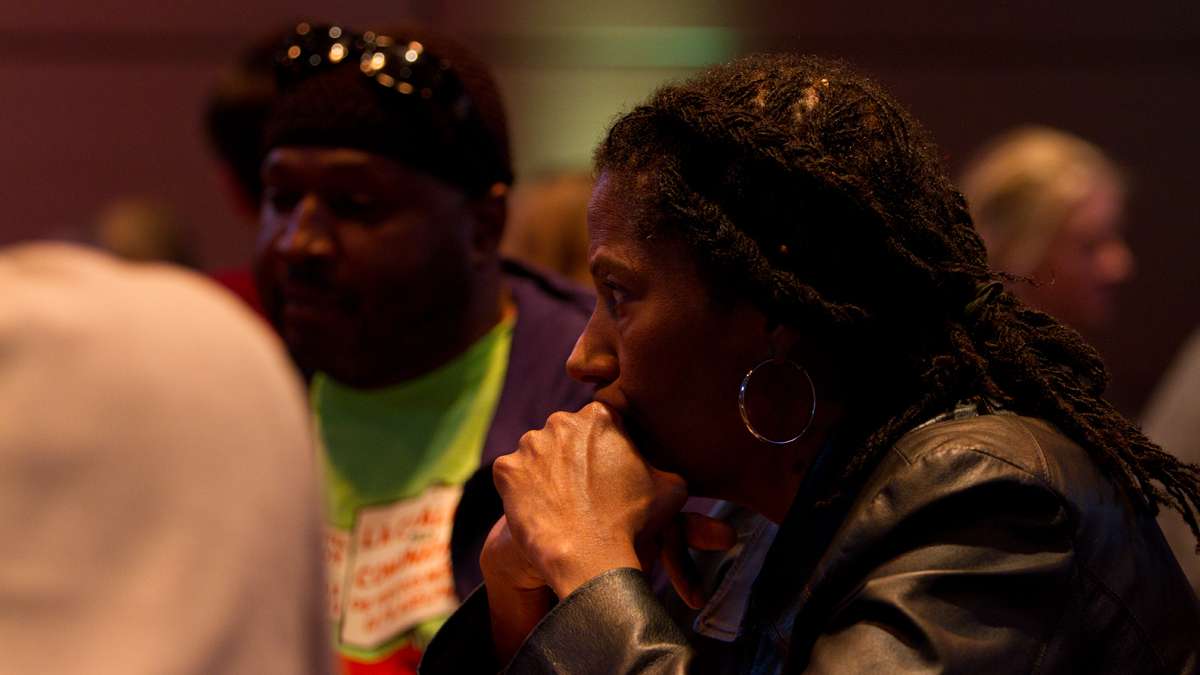
Some topics that stood out included feelings of helplessness against crime, rising rents, property taxes and tax breaks for developers. (Ifanyi Bell/for NewsWorks)
-
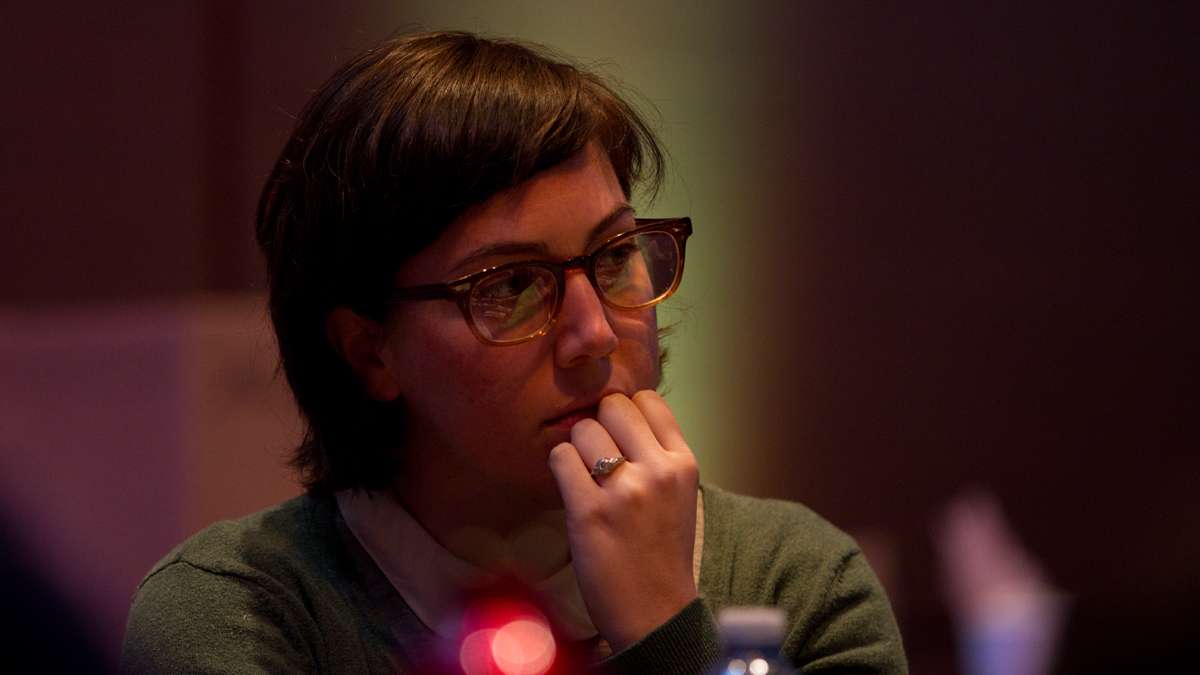
Some of the younger attendees expressed a desire to understand their role in the gentrification pressures in the city. (Ifanyi Bell/for NewsWorks)
-
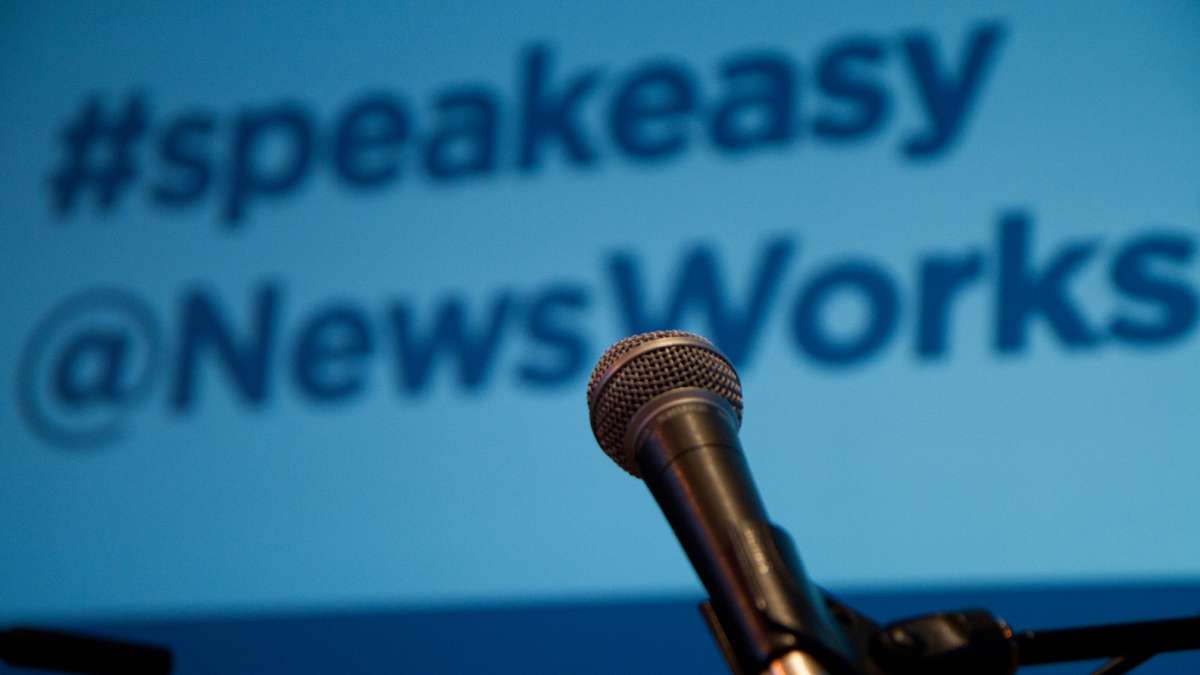
'Philadelphia Neighborhoods in Flux' is the first in a series of Speak Easy forums hosted by WHYY. (Ifanyi Bell/for NewsWorks)
-
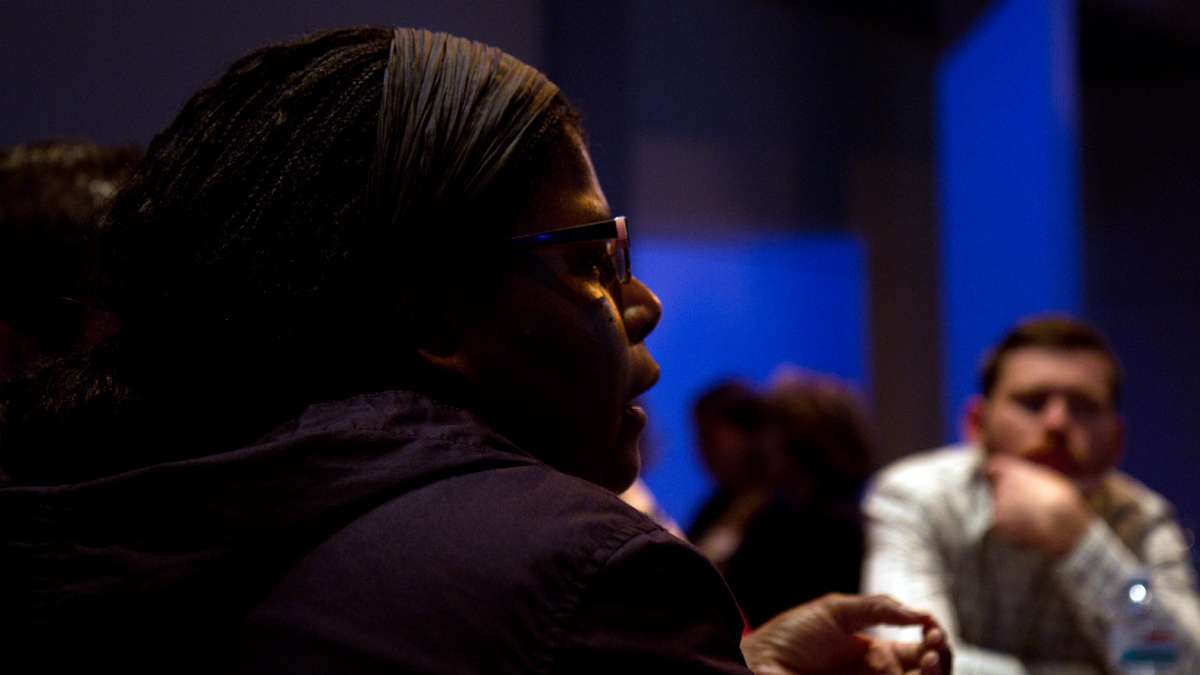
Discussions focused on person stories and lived experiences. (Ifanyi Bell/for NewsWorks)
-
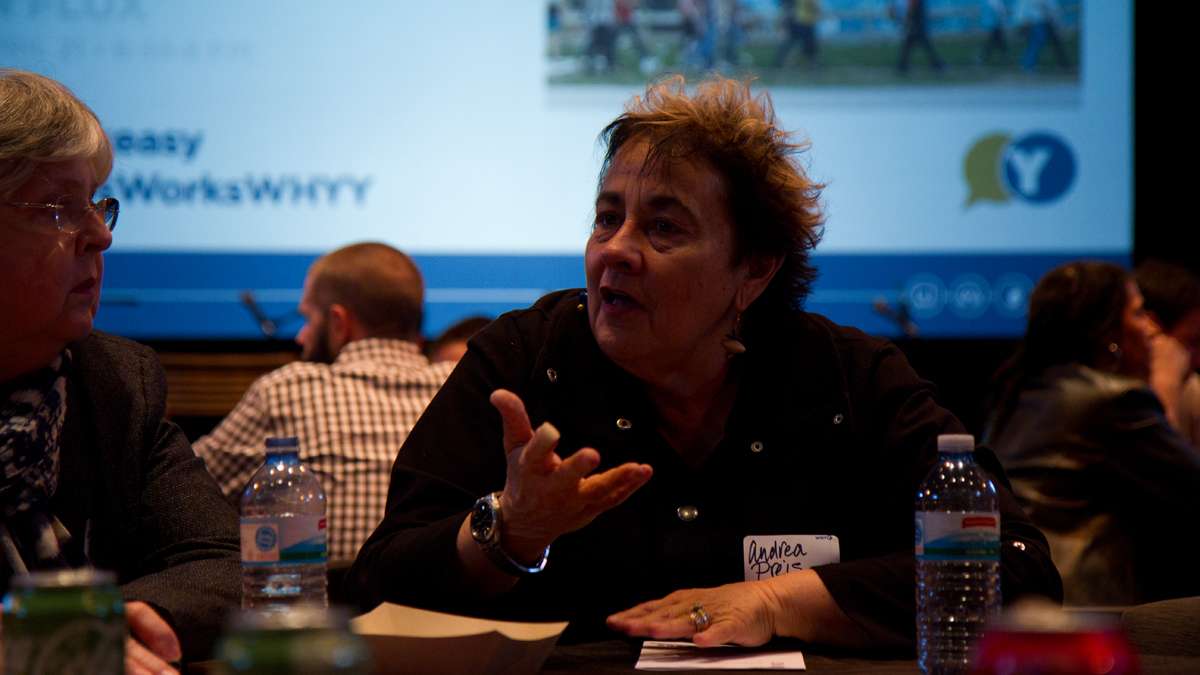
Some areas of concern included equitable development practices, L&I and zoning oversight, fair banking practices, the Land Bank, and funding for city schools. (Ifanyi Bell/for NewsWorks)
-
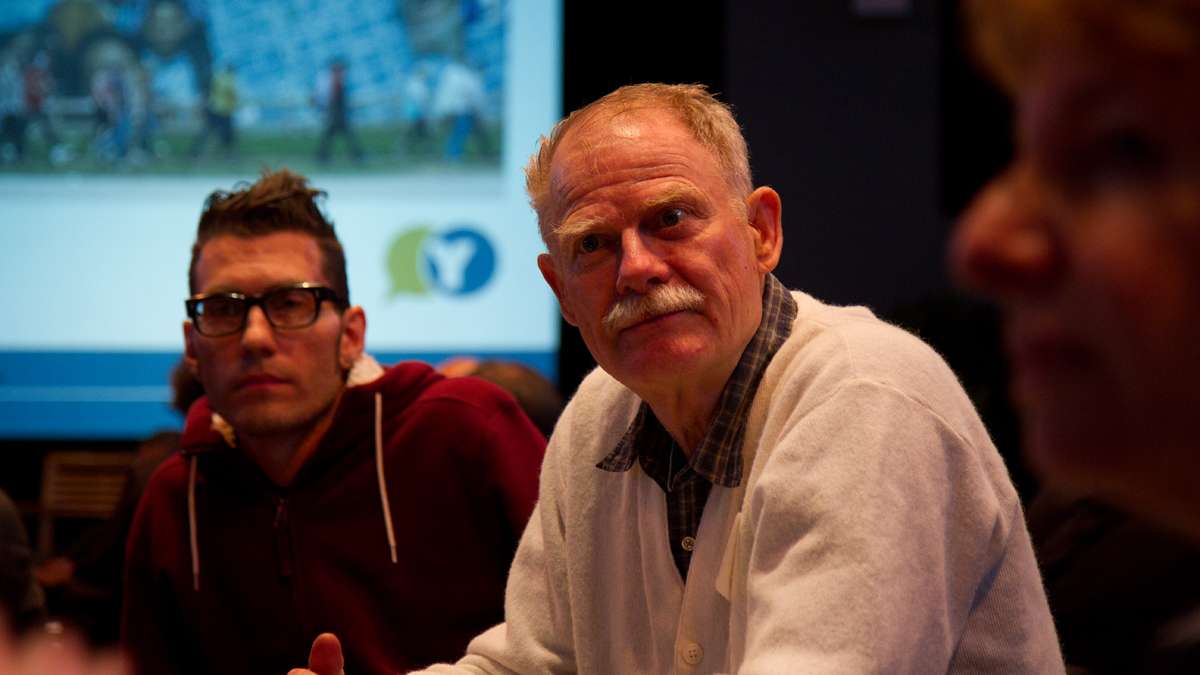
There were lifetimers and new residents, young and old, some who had lived in the city for more than a decade but still felt 'new,' some who had stayed put their whole lives, and some who moved around the city or even left only to return. (Ifanyi Bell/for NewsWorks)
-
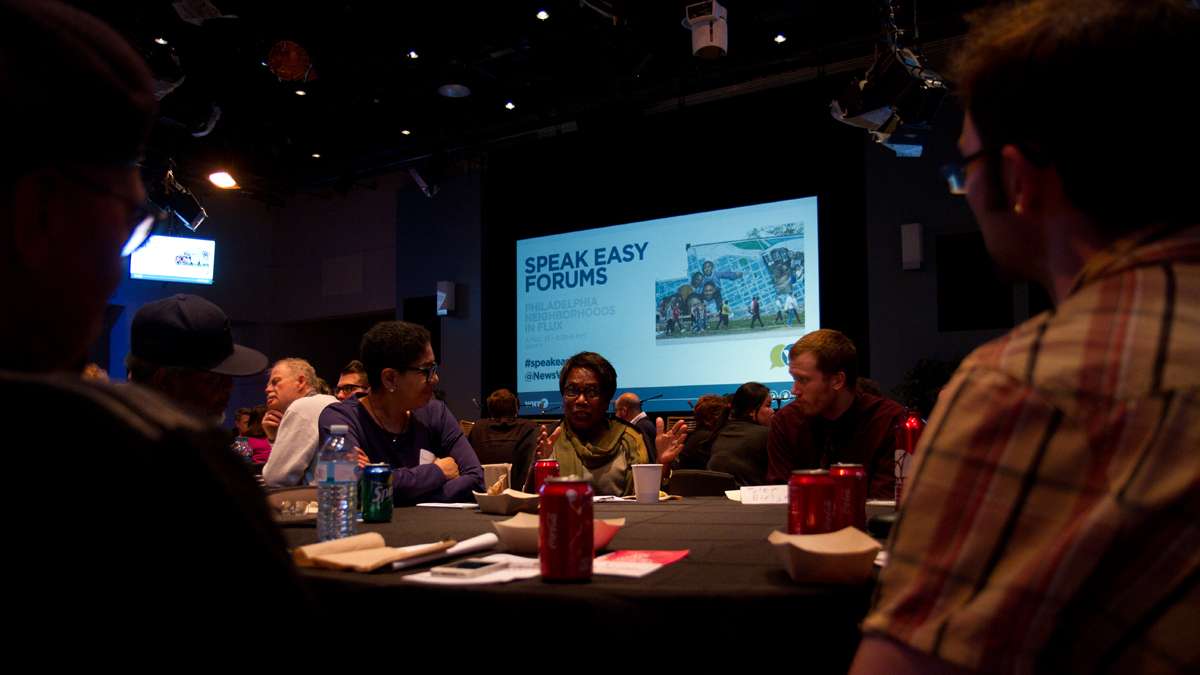
The level of sound rose only gradually as civil and respectful conversations took shape around the room. (Ifanyi Bell/for NewsWorks)
-
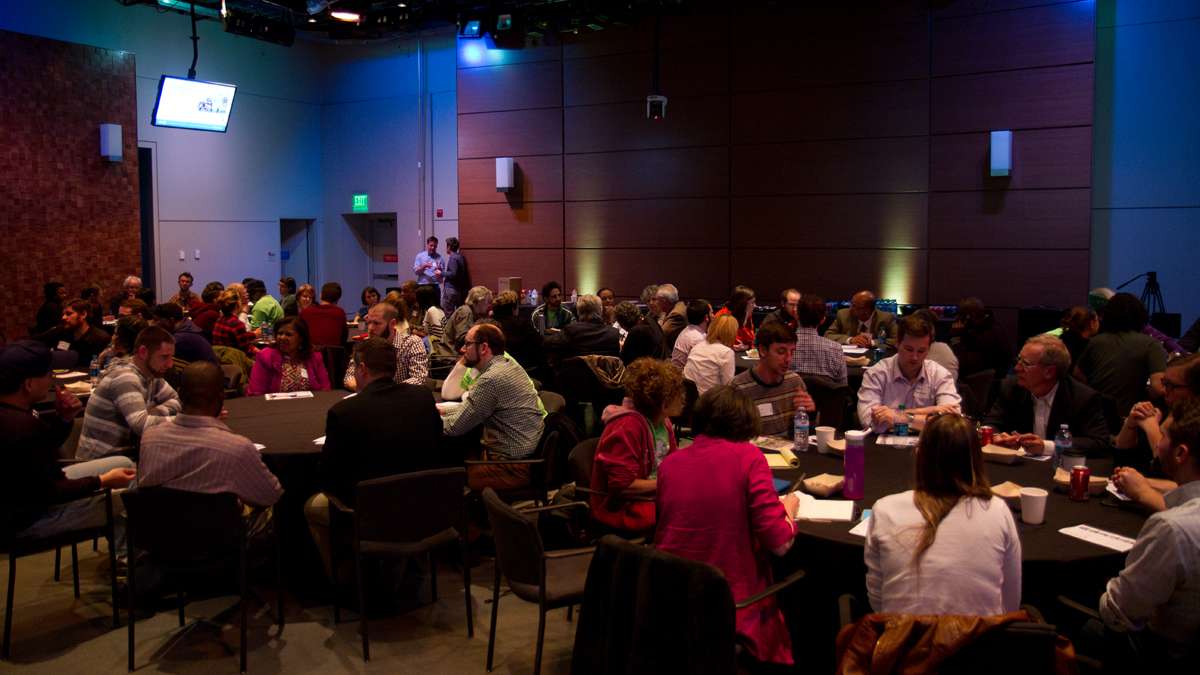
Attendees discuss their neighborhood experiences in small groups at the Speak Easy forum 'Philadelphia Neighborhoods in Flux.' (Ifanyi Bell/for NewsWorks)
-
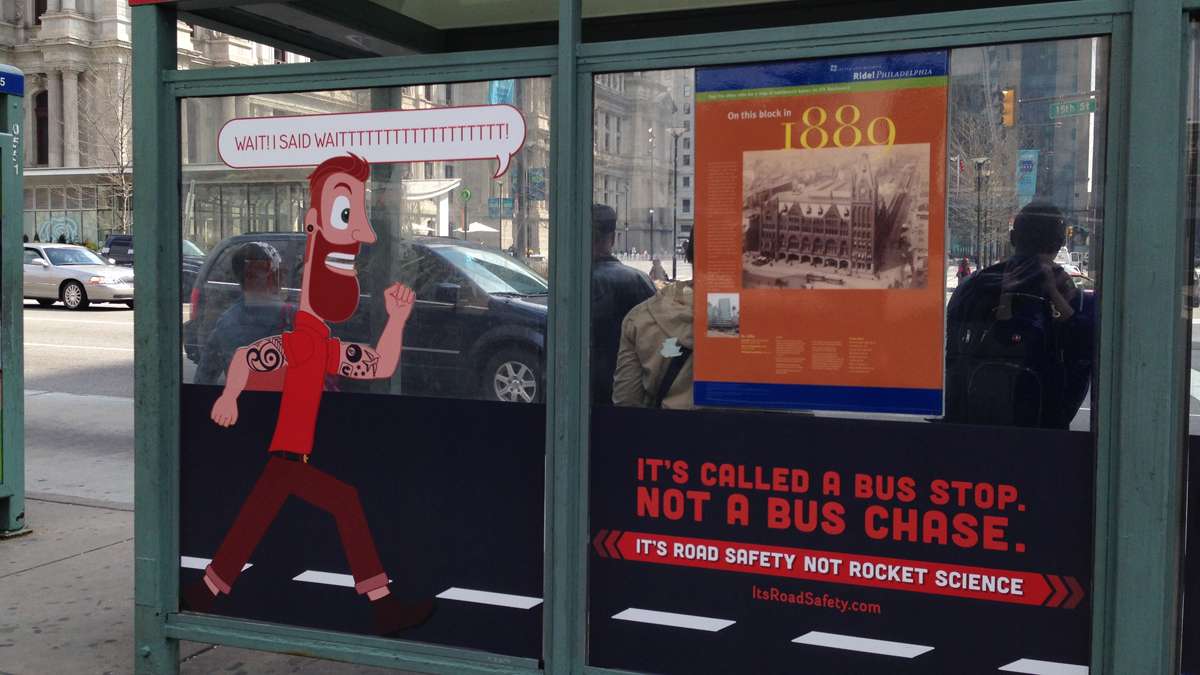
-
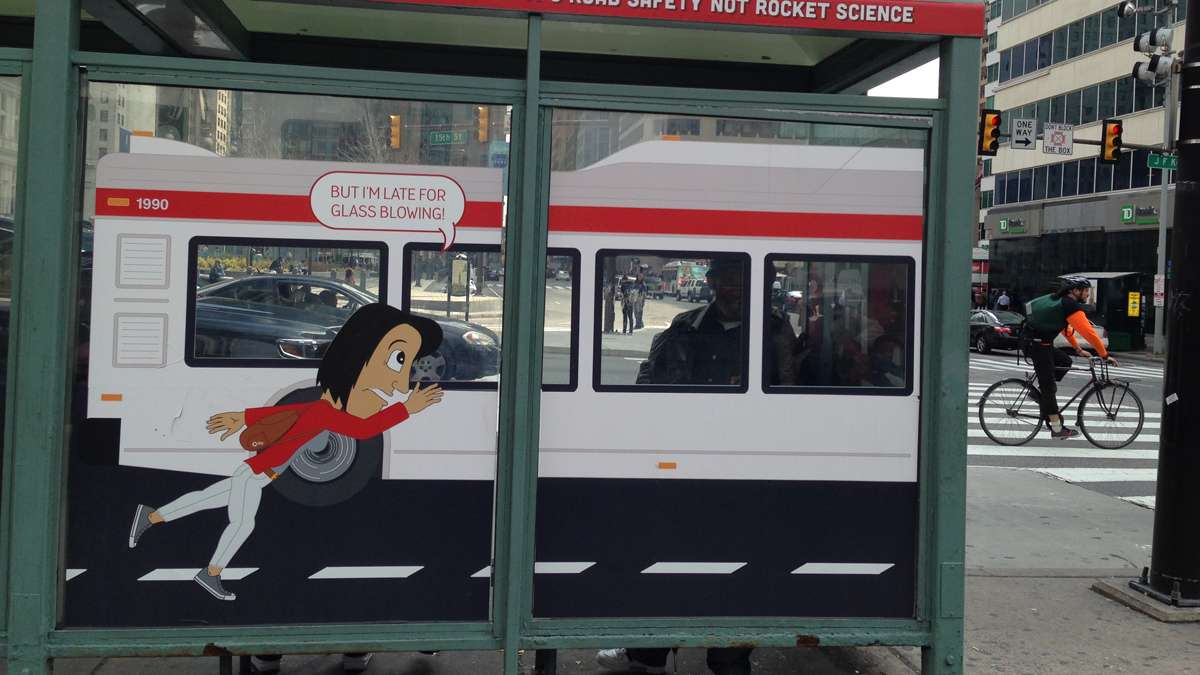
-

-

The time I probably came closest to being killed was one night a couple years ago on a corner in Center City. I was on the sidewalk, but a taxi barreling north heaved a right turn so sharp that the car flew up over the curb. If I had been standing a foot or two closer to the street, my internal organs would have been permanently rearranged.
According to the “It’s Road Safety, Not Rocket Science” campaign, first launched last year by the Mayor’s Office of Transportation and Utilities (MOTU) and renewed this spring, data from 2013 says a pedestrian gets hit by a car every five hours in Philadelphia.
@PhillyMOTU @PhiladelphiaGov @itsroadsafety but the road aren't safe!!! pic.twitter.com/yKkcITGKV0
— AwarenessCone (@AwarenessCone) April 8, 2015
A video on the Rocket Science website follows ludicrously bubble-wrapped pedestrians around the city in an effort to make us put down our smartphones while walking — a core focus of the campaign’s latest push to keep pedestrians, bikes, buses and cars from colliding.
It’s a worthwhile message, but as many disenchanted Twitter users have pointed out, safety is, well, a two-way street. Blaming pedestrians, however engrossed in our phones we are, isn’t the answer.
Sidewalk completely blocked. No crosswalk. So, @itsroadsafety, am I a moron for jaywalking? Do I deserve to be hit? pic.twitter.com/Rh6pfbMfBr
— philly bikes (@phillybikes) April 21, 2015
“Cars have bumpers. You don’t,” reads a characteristically snarky slogan from the campaign. Or a graphic of a smartphone beside the words “The most dangerous part of your commute.”
Last week, walking along Cherry Street between 15th and 16th, I bent my head over an e-mail for a few seconds, and looked up in time to see the front bumper of an SUV rolling right toward me. The driver, like me, was on the sidewalk. He noticed me at the same moment I stopped, bumped his car down the curb and onto the street, and drove away.
It sure isn’t rocket science. I could’ve refrained from checking my phone while walking, but the driver could’ve kept his car on the road.
This truck just turned the wrong way down market st. @itsroadsafety who's fault if a ped had been run over? The peds. pic.twitter.com/zPLLHNgZKf
— Victoria (@108_Victoria_St) April 15, 2015
That’s why many city denizens, who call the campaign victim-blaming, are riled. For example, on April 10, Twitter user David Howland posted a picture simultaneously showing vehicles blocking the crosswalk, a truck in the bike lane, and a car on the sidewalk moving between two people.
When sidewalks and crosswalks are routinely blocked, is it our fault if we’re walking in traffic?
@itsroadsafety cars blocking crosswalk, truck in bike lane, car driving around on sidewalk not looking. Ped’s fault? pic.twitter.com/pJQqqp1oJC
— David Howland (@frigidlight) April 10, 2015
I took my own photo on 16th and Chestnut recently. (See at the top of the page.) Not only is a thick metal plate making a giant tripping hazard right in the corner’s west crosswalk: a car going east is stopped so far forward at the red light, its back wheels smack in the middle of the crosswalk, that pedestrians have to step halfway into the intersection to cross.
Sure, I’ve seen some jaw-dropping pedestrians, like the woman on a Walnut corner last month who stepped off the curb without a glance and strutted right in front of a car that had a green light. She didn’t have a phone in her hand, and I know that because she was giving the finger to the driver as he threw on the brakes.
The Rocket Science campaign tackles many problems, from distracted driving to jaywalking to opening car doors into bike lanes without looking for cyclists, by poking fun at the rule-breakers with its slogans and graphics.
Now, MOTU has added another layer to its pedestrian-safety message: Don’t run after buses.
“It’s called a bus stop. Not a bus chase,” the display on the bus shelter at the SEPTA hub on 15th and JFK admonishes. A cartoon woman flies horizontally with her hands on the moving bus’s door. “Please don’t leave me,” her bubble says, while a luckier rider gapes from inside the bus.
On the back of the bus shelter, a bearded and tattooed cartoon hipster seems to be running pell-mell down the middle of a one-way road (judging by the dashed white line under his feet), yelling “Wait! I said waitttttttttttttttttt!” (Yes, 18 T’s.)
“But I’m late for glass blowing!” a cartoon woman yells as her cartoon bus pulls away.
As a frequent SEPTA rider myself, I can see the value of reminding us not to tear after buses, but this particular display hits the wrong note.
Maybe it’s because you can’t really address car safety versus bus safety without remembering that people who own cars have a distinct privilege over people who don’t. Probably most SEPTA riders would be pleased to hop in the car instead of haring to the bus stop, but we just can’t afford it.
Other campaign graphics focus on something silly the people are doing while they’re traveling: stuffing their face with a hoagie or putting on eyeliner while they’re driving. But the bus-safety images have a peculiar ad-hominem nature: it’s a mockery not just of a certain behavior en route, but a kind of mockery of the effort itself to get there — something people who rely on public transit can probably do without.
The images at 15th and JFK, targeting SEPTA users, are also hyperbolic in a way the other images aren’t. We’ve all seen people (or been the people) ambling through intersections with earbuds in or eating while driving, but someone flying from the doors as the bus drives away? Please.
“Thank you for not running people over,” ads targeting drivers say. But you can’t argue that a person running to try to catch a bus poses the same risk to others that a distracted driver does. So why the exaggeration directed at the SEPTA users massed on the sidewalk?
There’s also the implication (“I’m late for glass blowing!”), lacking in the campaign’s other cartoons, that the bus riders are being silly because they’re not trying to get somewhere important.
But anyone who has to take SEPTA to work knows that sinking feeling when your boss is waiting and your bus is pulling away and there’s not another one for 20 minutes (if you’re lucky).
So if MOTU wants to increase road safety for everyone, it shouldn’t be rocket science. Sure, poke some fun and see if it’ll get our eyes off of our screens for a second. But don’t mock city transit users simply for trying to get where they need to go, or imply that they don’t really need to get there at all.
WHYY is your source for fact-based, in-depth journalism and information. As a nonprofit organization, we rely on financial support from readers like you. Please give today.

